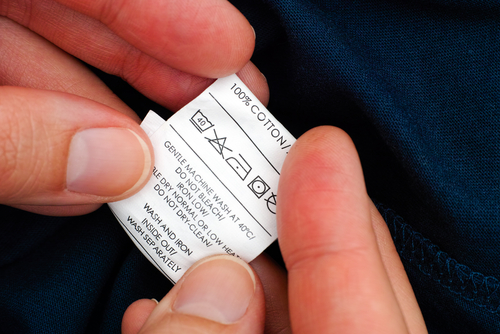How to Remove HTV from a Shirt
Just about every designer has been there. You are working on a new design, finishing up an order for a customer or making a gift for a friend or loved one. You’re running out of time, so you are rushing through cutting and weeding your design, placing it on the shirt and pressing it. And after speeding through the project in record time, you hold up the shirt only to realize you made a mistake.

Source: Diego Diaz Piedra/Shutterstock.com
While blank t-shirts are inexpensive, there is no need to waste one when you make a mistake while using heat transfer vinyl (HTV). Before you throw that shirt in the trash, check out this guide to learn how to remove HTV from a shirt! In doing so, you can save your project, save some money and avoid adding yet another piece of clothing to the already overflowing local landfill.
Gather Your Supplies
The good news is that removing HTV from fabric only requires a few supplies you likely already have, including:
- Scissors, a craft knife or a razor blade
- Tweezers
- An iron
You may also need some rubbing alcohol, petroleum jelly and/or Goo Gone for designs that turn out to be especially difficult to remove. Try removing the design without these products first if you would prefer to use a chemical-free approach.
Designing with Heat Transfer Vinyl? You’ll Need Blank T-Shirts!
Heat Up Your Iron

Source: Ekaterina_Minaeva/Shutterstock.com
Plug your iron in and crank it up to the highest temperature setting if the damaged shirt is made from cotton or linen. If it is made from a different material, choose the appropriate setting on your iron. You want the iron to be as hot as possible, but you don’t want it to melt the garment you are trying to save.
Apply Heat to the Design
Once your iron is hot, place the shirt over it so the hot surface is against the backside of the fabric where the HTV is attached. Usually, this means placing the iron inside the shirt. Carefully situate the shirt so the design you want to remove is over the iron’s plate and then use one hand to pull the fabric as tight as you can. Be extremely careful to avoid burning yourself. Saving a t-shirt is not worth sending yourself to the hospital with serious burns!
HTV Works on Wholesale Crewneck Sweatshirts, Too!
Try to Remove the Design
Using your scissors, craft knife or razor blade, use a gentle sweeping motion to pick the HTV away from the shirt. Start at the top of the design and be careful not to cut the fabric. The vinyl will likely come off in chunks rather than all at once. Just keep picking!
As the vinyl heats up, it will likely become easier to peel away. Once you notice this, use your tweezers to grab the HTV and pull it away from the fabric. Do not use your fingers as doing so could result in serious injuries. If your tools get sticky in the process, clean the residue off using rubbing alcohol.
With any luck, you should be able to remove the entire design with this method. If you are struggling or have residue left behind, you may need to try the next step.
Use Goo Gone or Petroleum Jelly
Stubborn HTV may require a bit more effort to remove. If most of the vinyl has come off, but there is still residue on the shirt, using Goo Gone or petroleum jelly should do the trick to remove it. When using petroleum jelly, rub a small amount into the adhesive stain and then add a sensitive detergent. Rub in a circular motion until the adhesive begins to clump up. Then, rinse the shirt using the hottest water recommended on the tag. Repeat the process until all of the residue has come off.
If you’d rather use Goo Gone, simply rub the product into the stain until the adhesive comes off. Repeat as needed and rinse thoroughly.
Wash and Dry

Source: FabrikaSimf/Shutterstock.com
Once all of the vinyl and residue has come off, turn the shirt inside out and wash it according to the laundering instructions on the tag. When the shirt is clean and dry, you’re ready to reapply vinyl.
Conclusion
Whether you’re customizing wholesale crewneck sweatshirts, t-shirts or hoodies, the methods outlined above should be effective for removing HTV and fixing mistakes. If you are finding your shirts aren’t looking quite right when you apply designs, consider learning more about logo placement on shirts to ensure your finished products come out looking flawless. And if you are interested in gaining a better understanding of how heat transfer vinyl works in the first place, check out this analysis of the dye transfer mechanism in heat transfer printing.


